The MSI MEG Ai1300P PCIE5 1300W PSU Review: The ATX 3.0 Era Has Begun
by E. Fylladitakis on December 8, 2022 11:00 AM EST- Posted in
- Cases/Cooling/PSUs
- PSUs
- MSI
- PCIe 5.0
- ATX v3.0
Cold Test Results (~22°C Ambient)
For the testing of PSUs, we are using high precision electronic loads with a maximum power draw of 2700 Watts, a Rigol DS5042M 40 MHz oscilloscope, an Extech 380803 power analyzer, two high precision UNI-T UT-325 digital thermometers, an Extech HD600 SPL meter, a self-designed hotbox and various other bits and parts. For a thorough explanation of our testing methodology and more details on our equipment, please refer to our How We Test PSUs - 2014 Pipeline post.
The efficiency of the MSI MEG Ai1300P does meet the 80Plus Platinum certification requirements when it is powered from an 115 VAC source. However, when the main’s voltage is 230 VAC, the efficiency is raised by an average of 1%, which is not enough to meet the 80Plus Platinum requirements for that input voltage. The average nominal load efficiency (20% to 100% of the unit's capacity) is 92.1% with the unit powered from a 230 VAC source, and drops down to 91.3% if the unit is powered by a 115 VAC source. It is also interesting to note that its efficiency under very low loads is quite high, at above 83% for a 5% load.
The fan of the MSI MEG Ai1300P PCIE5 is thermally controlled by default, with the unit keeping it disabled until the load was over 430-440 Watts. Regardless, the internal temperature of the PSU is quite low considering the massive power output. Once the fan does start, it is very quiet at first but then speeds up very quickly as the load increases, making the Ai1300P clearly audible when the load is greater than 800 Watts.


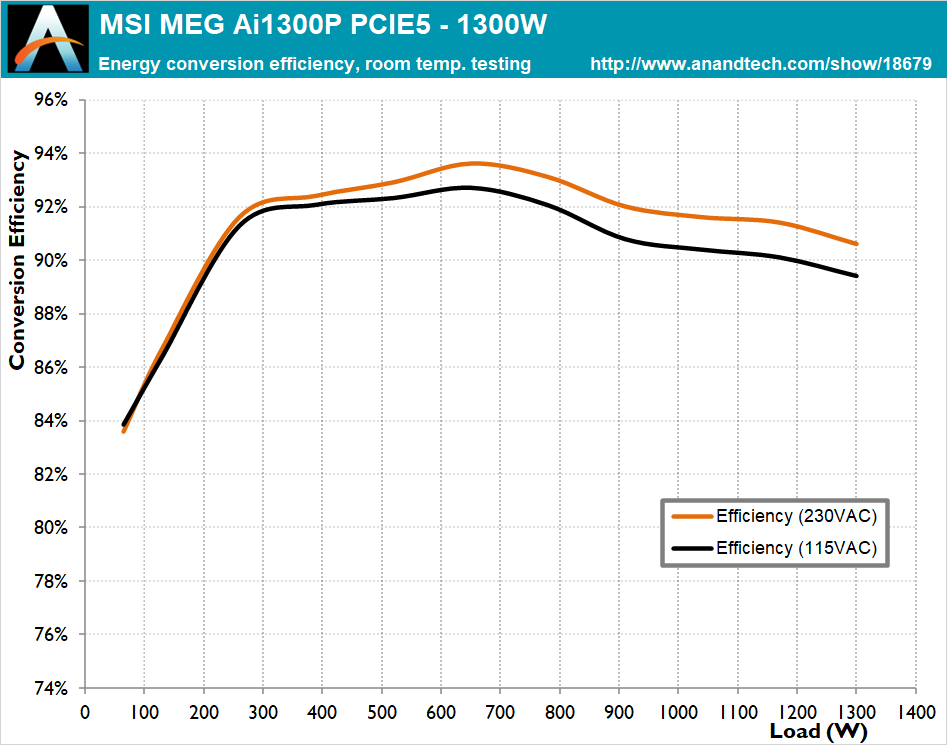
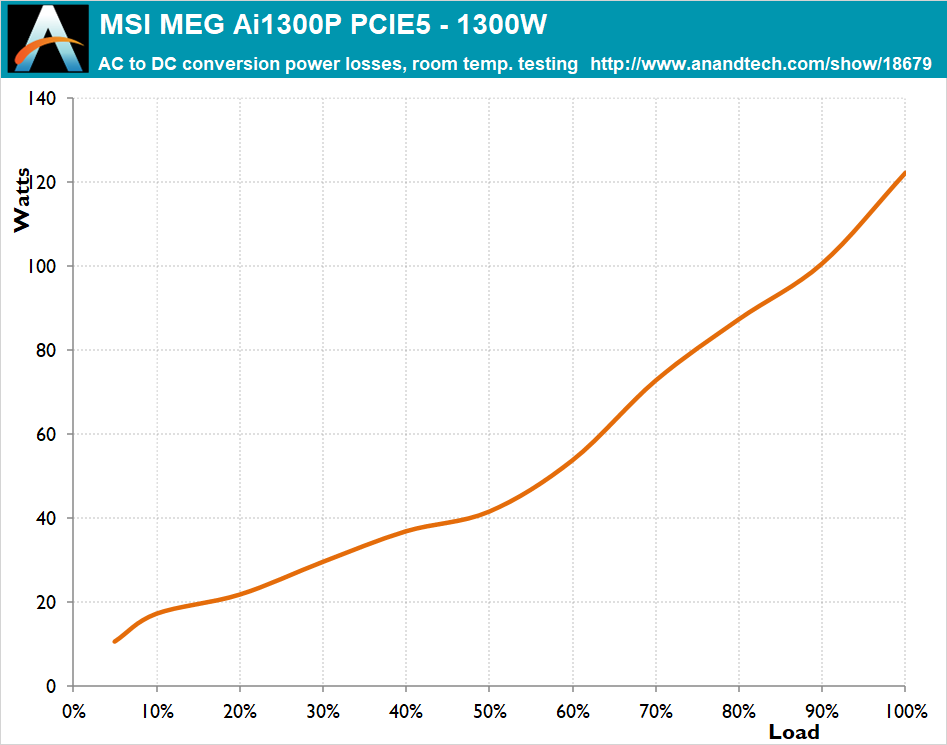
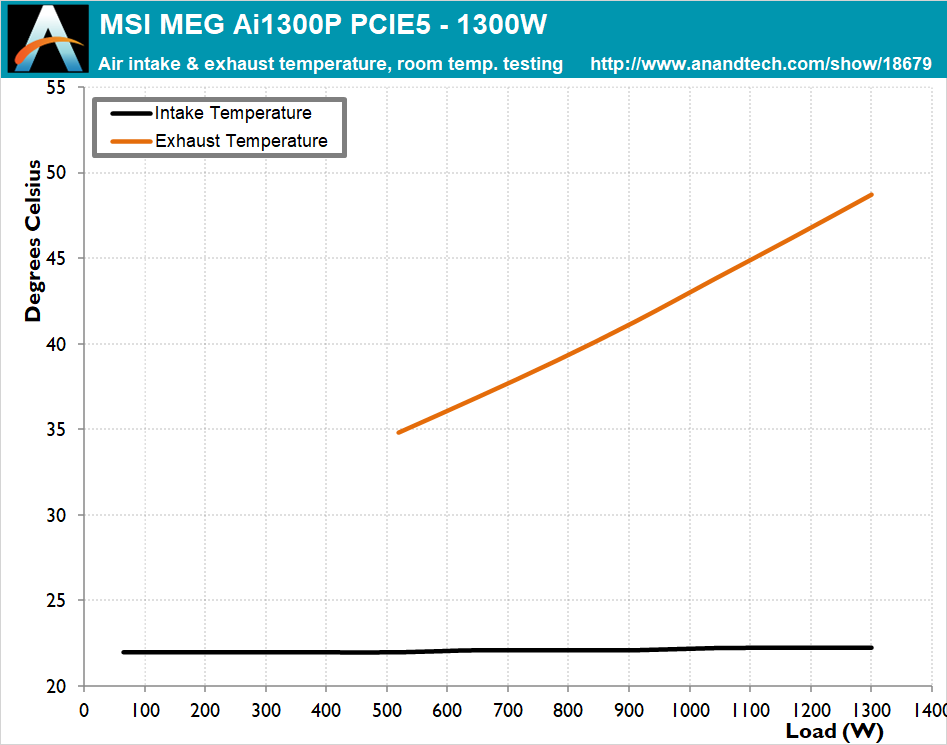
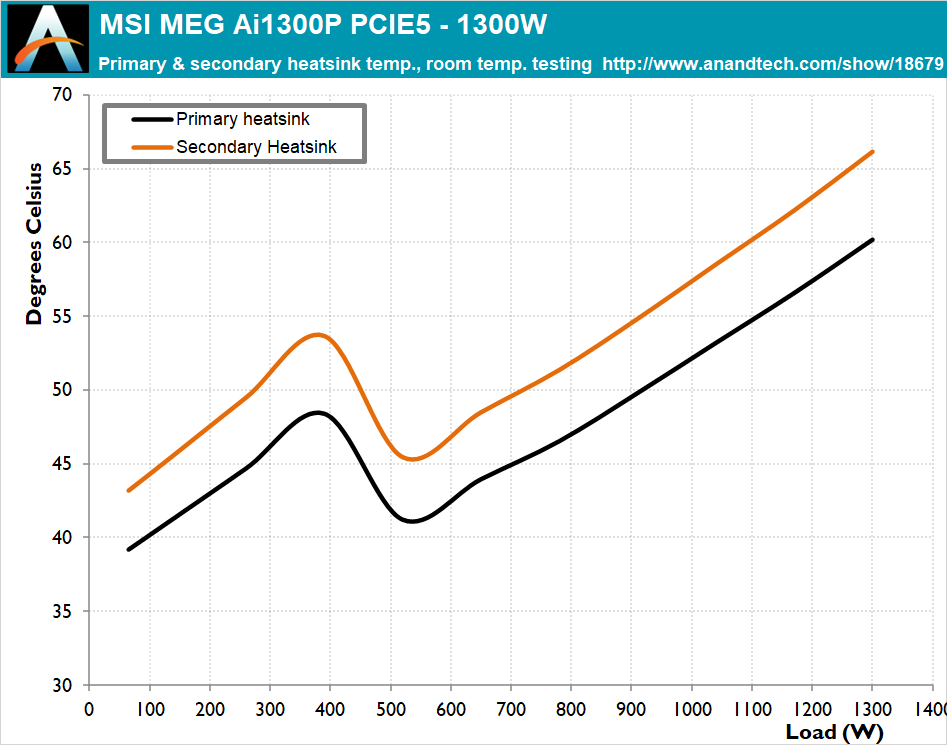
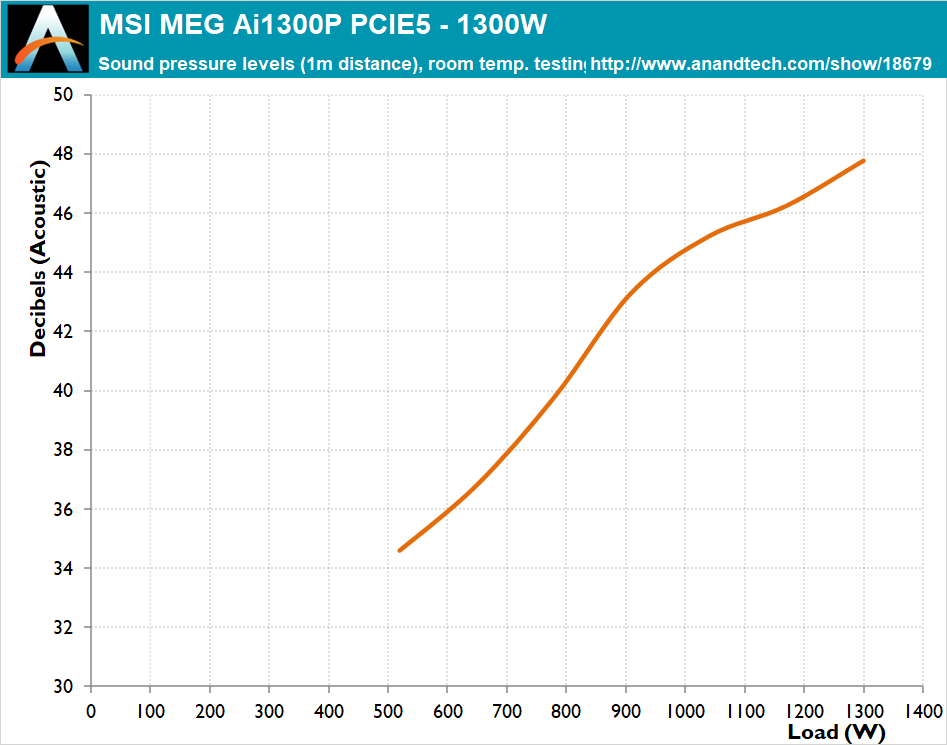








67 Comments
View All Comments
yifu - Tuesday, December 13, 2022 - link
we need to support anandtech, when innerfidelity went away, there is only commercials reviews. we need anandtech.com, we need some kind of honest authority, otherwise it's just chaos, and shit!!!hMunster - Wednesday, December 14, 2022 - link
This is getting ridiculous. I remember when 200-220W were normal and a 250W PSU was considered large.Glock24 - Monday, December 19, 2022 - link
What catched my attention is the "PCIE5" in the name, what do they want to achieve with that?GreenReaper - Tuesday, December 20, 2022 - link
Well, 12VHPWR is an amendment to the PCIe 5.0 specification by the PCI Special Interest Group: http://jongerow.com/12VHPWR/Presumably graphics cards supporting PCIe 5.0 will also have greater adoption of the new socket, so this indicates readiness for them. However, we don't see any of those on the market yet. It also seems to have been added to ATX 3.0, so if you want to be certified as such you (might? at a certain power?) have to include one.
web2dot0 - Saturday, December 24, 2022 - link
Who the hell needs a 1300W PSU for personal use? It’s almost like wasting energy to play computer games is coolYoussef 2010 - Friday, December 30, 2022 - link
The 12VHPWR adapters aren't poorly designed. The users were not fully seating the connectors as concluded by GamersNexus and further confirmed by Nvidia themselves. A SIMPLE leaflet instructing the users to verify that there's no gap between the connector and the plug was all that was required. It was an oversightMiddleman - Monday, February 6, 2023 - link
Its not about using 1300watts, its about running at 50% load efficiently.